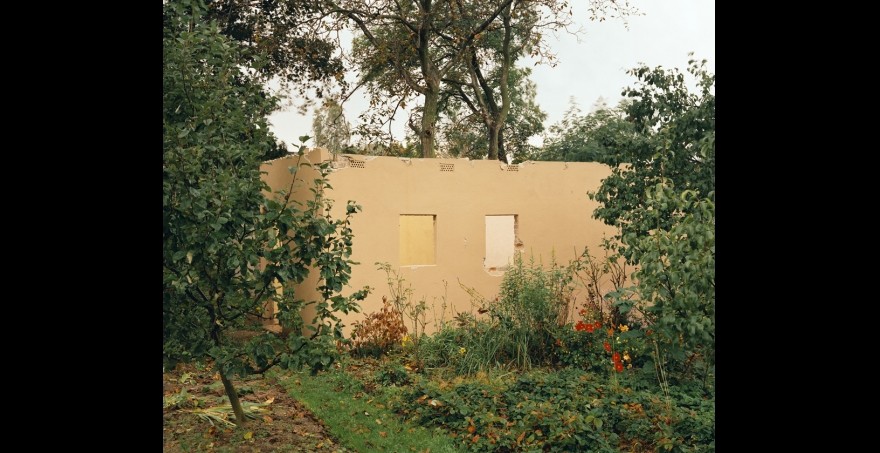Allotment Garden / Schrebergarten

'The gardens themselves were named after Moritz Schreber, who as Scott Watson writes “had argued that civic garden plots would ameliorate the deleterious effects of the Industrial Revolution. Schreber’s proscriptive mind imagined them as places where workers could practice outdoor callisthenics and rid their lungs of toxic factory fumes”. In reconstructing one of these plots in a cinema studio for his film work Der Sandmann Douglas isolates the utopian, artificial nature of the original project. Nature has become capitalism’s scapegoat, packaged as a kind of soporic to distract and seduce the Sunday gardeners.'
Michael Tarantino, 'Et in arcadia ego', Enclosed and Enchanted, Modern Art Oxford, 2000, p. 20.
http://ubu.com/film/douglas_sandmann.html
Stan Douglas, Der Sandman, 1995
Originally an installation: Two-track 16mm black-and-white film projection and stereo soundtrack.
"The film installation Der Sandmann investigates the intersection of history and memory as witnessed against the backdrop of post-Cold War Germany. Shot on 16mm film in the old Ufa studios near Potsdam, the piece fuses E.T.A. Hoffmann's eponymous tale, Freud's citation of it in "The Uncanny," his study of repression and repetition, as well as the social impulses behind 19th-century German urban planning, which instituted the SchrebergŠrten, plots of leasable land on which the poor could grow their own food. Projected as two separate but intersecting videos showing the garden at different chronological points-in use during the 1960s and as a construction site some 20 years later-Der Sandmann contemplates temporality and the transformative effects of history." -- Nancy Spector (via ubuweb)